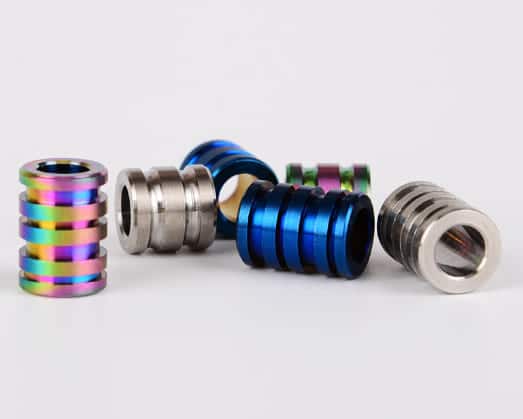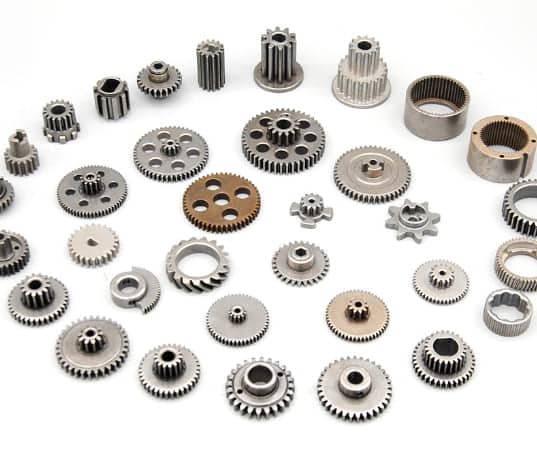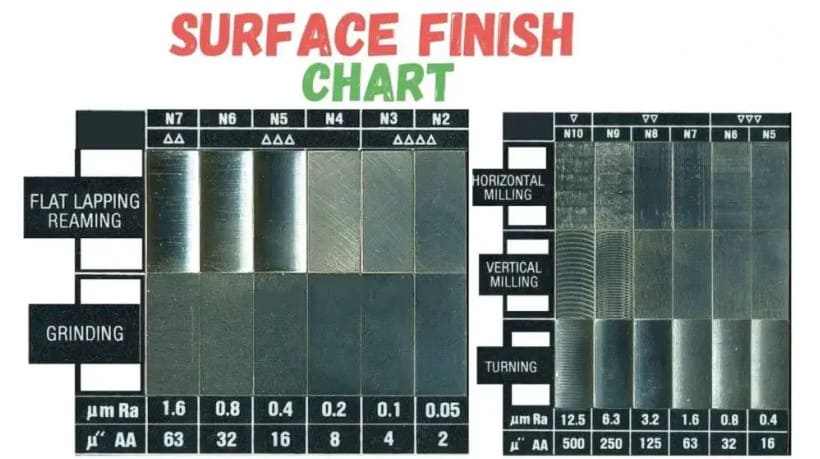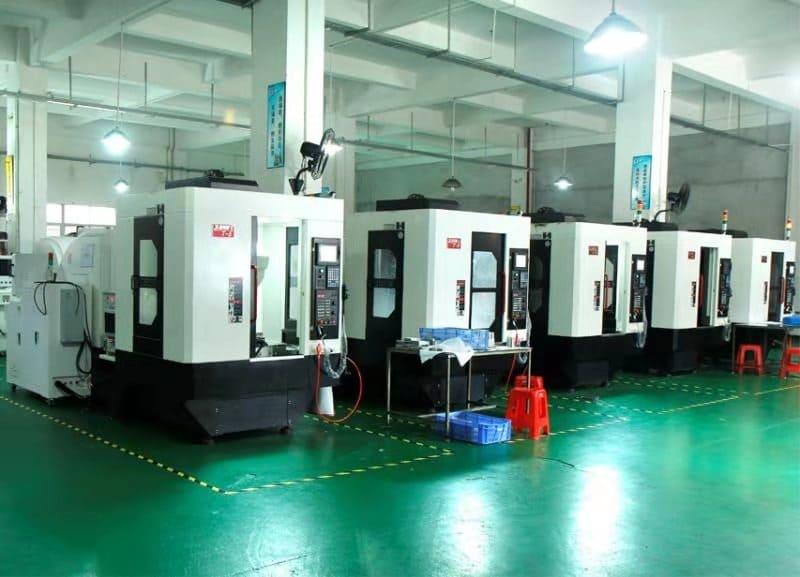Electroplating and electrolytic processes play vital roles in various industries, from manufacturing and electronics to automotive and jewelry.
They are instrumental techniques used to enhance metal objects’ appearance, durability, and functionality.
In essence, what do these terms mean, and what makes them different? As a result, we will examine the differences between electroplating and electrolysis and explain the intricate processes involved.
A solid understanding of electroplating and electrolysis will enable you to appreciate their complexities and real-world applications.
Let’s explore the mysteries of electroplating and electrolysis and discover the magic behind their transformative effects on metal surfaces.
What is the difference between electroplating and electrolytic?
Definition and Purpose of Electroplating
An electroplating technique deposits a thin metal layer onto an object’s surface.
Electroplating involves immersing an electrode (known as the anode) in an electrolyte solution and the object to be plated (known as the substrate).
As an electric current passes through the solution, metal ions from the anode are attracted to the substrate, forming a bonded layer.
The electroplating process enhances the appearance, provides corrosion resistance, improves conductivity, and creates a protective coating.
Definition and Purpose of Electrolytic Process
On the other hand, electrolysis involves using an electric current to elicit a chemical reaction.
Through this technique, an electric current passes through an electrolyte solution containing ions capable of oxidation or reduction.
As the current flows, the ions are attracted to the respective electrodes, which undergo chemical reactions.
Electrolysis serves a variety of purposes, depending on the application. You can use it to refine metals, extract metals from ores, electrorefining, electroextraction, etc.
Key Differences between Electroplating and Electrolytic
Electroplating and electrolytic plating have several key differences. Such as:
Purpose
Electroplating enhances the surface’s appearance, corrosion resistance, and conductivity by depositing a metal layer over the substrate.
As an alternative, electrolytic processes can refine metal, electroextraction, and electrorefining to get pure metal.
Electrolyte Composition
The metal salts you use in electroplating are specific to the metal you are plating. The anode selectively attracts metal ions to the substrate in this process.
The electrolyte solution consists of salts or compounds that undergo chemical reactions to produce the desired result.
Electrode Polarity and Current Flow
In electroplating, the substrate serves as the cathode, and the metal electrode provides the metal ions.
The current flows from the anode to the cathode. Current flows between two electrodes (anode and cathode) in electrolytic processes.
Chemical Reactions
Electroplating involves reducing metal ions from the anode on the cathode (substrate), which forms a metal layer.
Depending on the process, electrolytic processes involve numerous chemical reactions at the cathode and anode.
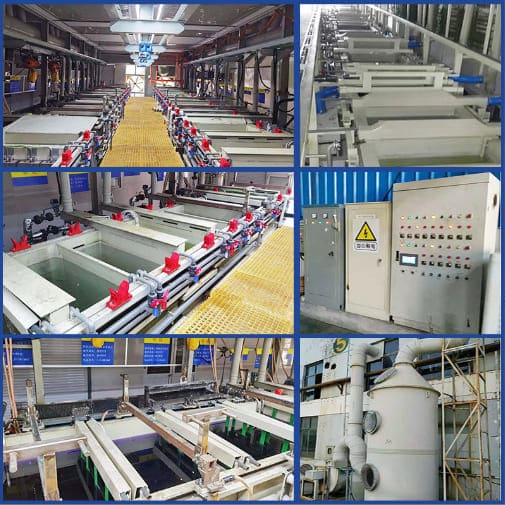
What is Electrolytic Plating?
Electrolytic plating deposits a thin metal layer on an object using an electrolyte solution. Nowadays, the electronics, automotive, aerospace, and jewelry industries all use this technique.
You can electroplate things to make them look good, don’t corrode, and last longer.
There are 3 main components in electrolytic plating: the substrate (or workpiece), the plating material, and the electrolyte solution.
Substrates are usually conductive materials, like metal or plastic, coated with conductive layers.
Plated metal is applied to the substrate and varies based on the final product’s appearance and properties.
Gold, silver, nickel, copper, and chromium are the most common plating materials.
Principles and Mechanisms of Electrolytic Plating
The electrolytic plating process involves driving a chemical reaction with an electric current.
The electrolyte solution used in the plating process contains metal ions. When an electric current is applied, metal ions are reduced at the cathode (the object to be plated) and deposited as a metal layer.
In the meantime, metal atoms are oxidized and dissolved into the electrolyte solution at the anode, replenishing the metal ions.
Several factors influence electroplating, including voltage, current, electrolyte composition, temperature, the distance between anode and cathode, and time.
It’s imperative to control these parameters carefully to get the plated layer’s right thickness, quality, and uniformity.
Applications and Benefits of Electrolytic Plating
With its numerous benefits, electrolytic plating is an excellent choice for many applications. The following are some common applications:
Decorative purposes
The electroplating process gives objects a thin layer of metal coating to enhance their appearance.
It’s used in jewelry, silverware, and decorative items like doorknobs, faucets, and lights. It makes surfaces shiny, reflective, and visually appealing.
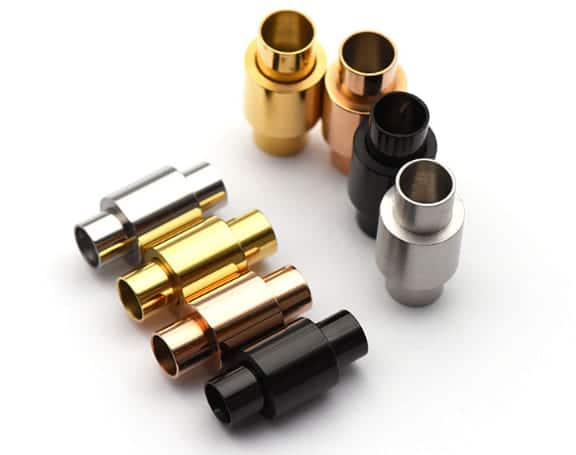
Corrosion protection
Electroplating protects metal objects from corrosion. A corrosion-resistant metal layer (such as zinc, nickel, or chromium) is deposited over the surface to shield the underlying metal.
The automotive industry uses electroplating to prevent rusting on steel bumpers and wheels.
Electrical conductivity
Electroplating enhances the electrical conductivity of objects. Gold and silver electroplating, for example, improves conductivity, reduces resistance, and ensures reliable electrical performance in connectors, terminals, and contacts used in electronics.
Wear resistance
Electroplating improves wear resistance by coating them with a layer of harder metal.
The application is helpful for friction-sensitive components like engine parts, machine tools, cutting tools, and molds. Chrome and electroless nickel are good examples of materials that can be electroplated for durability.
Chemical resistance
Electroplated coatings can be resistant to chemicals and harsh environments.
The chemical industry uses electroplated materials to protect laboratory equipment, chemical processing equipment, and components from corrosion or chemical attack.
Reflectivity and optics
The electroplating process is employed in the production of mirrors and reflective surfaces.
When you deposit a thin metal layer (often aluminum) on a glass substrate, it becomes highly reflective. Electroplating is also used to make lenses and telescope mirrors that reflect more light.
What are the Two Types of Electroplating?
There are a variety of electroplating techniques according to the size, shape, and quantity of the objects being plated.
There are two primary types of electroplating: Barrel electroplating and Rack electroplating.
Barrel Electroplating
Barrel electroplating, also called bulk electroplating or mass electroplating, is used to plate small, discrete objects in bulk.
You submerge the objects to be plated in an electrolyte solution inside a rotating barrel or drum.
As the barrel rotates, it constantly agitates and tumbles the objects, ensuring uniform plating.
Most objects are suspended in a barrel using racks, wires, or specially designed fixtures for proper contact with the electrolyte solution.
Electroplating begins when an electric current is applied to the barrel to activate the metal ions in the electrolyte.
Suitable Applications
- Fasteners, such as screws, bolts, and nuts
- Small metal components, like rivets, springs, and connectors
- Decorative items, including beads, clasps, and jewelry findings
- Electronic components, such as pins, contacts, and connectors
Advantages of Barrel Electroplating
The following are some of the key advantages of barrel electroplating:
High Efficiency
Electroplating barrels is a highly efficient process in terms of production throughput.
A rotating barrel can process many objects simultaneously, thereby enhancing plating productivity.
Therefore, it’s an excellent choice for industries that need lots of small stuff.
Cost-Effectiveness
With its bulk processing nature, barrel electroplating is a cost-effective plating solution.
Individually plating small parts requires a lot of time and labor, but barrel electroplating allows multiple items to be plated simultaneously.
In turn, this reduces labor costs and increases production efficiency.
Uniform Plating Coverage
As the rotating barrel tumbles, the electrolyte solution contacts all surfaces of the objects.
As a result, all objects have consistent coating thickness and appearance. It prevents uneven plating by rotating the objects inside the barrel, making it more visually appealing.
Ease of Handling
Barrel electroplating eliminates the need to handle and position each object individually, saving time and labor.
Racks, wires, or specially designed fixtures suspend the objects inside the barrel, facilitating their immersion in the electrolyte solution.
It increases efficiency and reduces the risk of damage to the objects.
Versatility
The barrel electroplating process can accommodate a wide range of small objects.
In a barrel, racks or fixtures ensure that objects are held securely and properly exposed to the electrolyte solution.
Its versatility makes it possible to efficiently plate fasteners, small metal parts, decorative items, and electronic components.
Enhanced Productivity
Barrel electroplating boosts productivity by combining high efficiency, cost-effectiveness, uniform plating coverage, and streamlined handling.
With this electroplating technique, manufacturers can increase output, meet production demands, and reduce lead times.
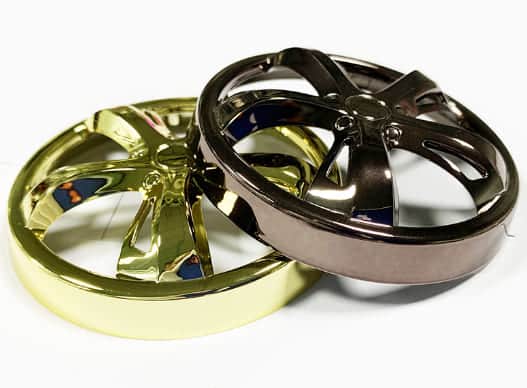
Rack Electroplating
Rack electroplating is used for plating larger or irregularly shaped objects that cannot fit into barrels.
Rack electroplating involves mounting objects on racks or frames, which makes it possible for each object to be plated individually and precisely.
Rack electroplating uses metal racks or frames that serve as electrical contacts for the objects.
During plating, the objects are carefully placed on the racks to ensure proper exposure to the electrolyte solution.
Afterward, the racks and objects are immersed in the electrolyte, and an electric current is applied to start the plating.
Suitable Applications
- Large metal parts, like automotive components and machinery parts
- Irregularly shaped objects, including sculptures, prototypes, and custom-designed items
- High-value objects, such as luxury goods, fine jewelry, and decorative art pieces
Advantages of Rack Electroplating
It offers several advantages for precise and controlled plating. The following are some key advantages of rack electroplating:
Precise Control
With rack electroplating, you can control the plating process precisely. The coating thickness is uniform and consistent for each object since each is plated individually.
This level of control is essential when applications require specific plating characteristics, such as thickness, adhesion, or surface smoothness.
Customization
You can customize the rack electroplating process to meet your aesthetic or design needs.
The plating process allows you to plate or mask certain areas on an object selectively.
This flexibility allows you to create intricate designs, complex finishes, and unique surface textures.
Flexibility
The rack electroplating process can accommodate objects of various sizes, shapes, and complexity.
This method uses racks or frames to hold objects securely and in the desired position during plating.
The versatility of rack electroplating makes it perfect for plating large metal parts, irregularly shaped components, and high-value parts.
Recommended: A Complete Guide To Surface Finish Of CNC Machined Parts
Accessibility for Plating Designated Areas
Individually handling objects makes rack electroplating easy for masking or selective plating.
Masking techniques, such as specialized tapes and coatings, can prevent certain areas from plating while ensuring other areas get coated.
With this accessibility, the plating process is more precise and controlled.
High-Quality Finishes
Rack electroplating produces high-quality finishes. Individual handling and controlled plating minimize defects like uneven coating, drips, or adhesion problems.
As a result, the plated objects have a visually appealing, uniform, and high-quality finish.
Maintenance of Object Integrity
Rack electroplating maintains the structural integrity of delicate or fragile objects.
This method uses custom racks or frames to give support and prevent distortion. It is essential for delicate or intricately designed objects that require special handling and protection during plating.
Versatility for Complex Objects
Rack electroplating is excellent for plating complex objects that can’t fit in a barrel.
This method works well for objects with intricate contours, recesses, or multiple surfaces.
High-end jewelry, aerospace, and automotive industries often use rack electroplating for complex components.
Quality Assurance
Rack electroplating allows for better quality control and inspection since objects are processed individually.
Following plating, you can examine each item visually to ensure the coating thickness, adhesion, and quality are all uniform. It keeps high standards and cuts down on defective plating.
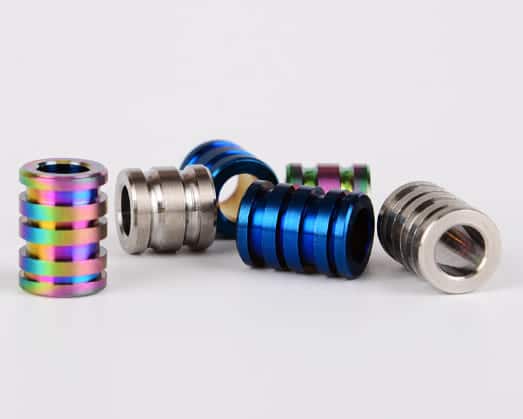
Which is better: electroplating or electroless plating?
Electroplating and electroless plating are two different ways to deposit metal on a substrate. Although both techniques have advantages and limitations, which one is better depends on many things.
Comparison of Electroplating and Electroless Plating
Here is a comparison of electroplating and electroless plating:
Process
Electroplating requires an electric current to initiate metal deposition.
When a power source creates an electric field, metal ions in the electrolyte solution get attracted to the substrate, forming a metal coating.
Electroless plating, on the other hand, doesn’t need electricity. It relies on a chemical reaction between the substrate and a reducing agent to deposit metal.
Control and Uniformity
You can control the thickness and composition of the metal coating with electroplating.
Electric current gives greater control and uniformity when plating, which makes it ideal for applications requiring specific coating thickness.
Electroless plating provides a more uniform finish, particularly for complex shapes or recessed areas, because the deposition occurs evenly.
Substrate Compatibility
Typically, electroplating is suitable for conducting substrates, such as metal or conductive materials.
Comparatively, electroless plating can be applied to a wider range of materials, including plastics, ceramics, and composites.
It makes electroless plating more versatile when it comes to substrate compatibility.
Catalyst Requirement
Electroplating usually requires a catalyst or seed layer on the substrate surface to start the process.
The catalyst layer is usually created through preplating or activation. Electroless plating does not need a catalyst since the chemical reaction between the reducing agent and the substrate surface initiates the plating.
Deposition Rate
Electroless plating generally has a slower deposition rate than electroplating.
An electric current speeds up the metal deposition process, resulting in quicker plating.
Electroless plating is chemical reaction-based, so it’s slower, but the coating thickness is more uniform on complex shapes.
Advantages and Limitations of Electroplating
Advantages of Electroplating:
- Precise control over coating thickness and composition.
- Excellent adhesion and bonding with the substrate.
- High deposition rate compared to electroless plating.
- Enhanced corrosion protection and durability.
- Good electrical conductivity.
- Wide range of available plating materials.
Limitations of Electroplating:
- Limited substrate compatibility with conductive materials.
- Need for a conductive path and a catalyst layer.
- Potential for uneven coating thickness on complex shapes.
- Higher cost and complexity due to the need for power sources and control systems.
Advantages and Limitations of Electroless Plating
Advantages of electroless plating include:
- Compatibility with a broader range of substrates, including non-conductive materials.
- Uniform coating thickness on complex shapes and recessed areas.
- No need for a conductive path or catalyst layer.
- Lower cost and simplicity compared to electroplating for specific applications.
- Ability to achieve self-catalyzing processes.
Limitations of electroless plating include:
- Slower deposition rate compared to electroplating.
- Limited control over coating thickness and composition.
- Lower adhesion strength compared to electroplating.
- Limited options for plating materials.
- The requirement for proper process control and stabilization.
Factors Influencing the Choice of Plating Method
Several factors influence the selection of electroplating or electroless plating for a particular application. Some of these factors include:
- Substrate material and compatibility.
- Required coating thickness and uniformity.
- Desired coating composition and properties.
- Complex shape or recessed areas.
- Production volume and throughput requirements.
- Cost considerations.
- Corrosion resistance and durability requirements.
- Electrical conductivity needs.
- Availability of plating materials.
The choice between electroplating and electroless plating depends on the application requirements, substrate material, and desired coating properties.
It’s essential to carefully consider the pros and cons of both plating methods before you pick one.
What is the electroplating process of metal parts?
An electroplating process deposits a thin layer of metal on the surface of a metal object or substrate.
The process involves an electrolyte solution, an anode (the metal ions source), a cathode (the object to be plated), and an electric current.
Electroplating improves aesthetics, corrosion resistance, hardness, and conductivity.
The electroplating process for metal parts is as follows:
Preparation and Cleaning of Metal Parts
Preparing and cleaning metal parts before electroplating is crucial to a successful plating job.
A thorough cleaning removes dirt, oils, oxides, and contaminants from the metal parts. The process usually involves degreasing, etching, and rinsing.
You can also polish or abrasively blast the surface to get the finish and cleanliness you want.
Steps Involved in Electroplating
The following are the steps involved in electroplating.
Surface Preparation
Preparing the metal part’s surface for plating is the first step. To ensure optimal adhesion of the plating material, you need to do a thorough cleaning.
Mechanical treatments can remove imperfections and roughness like buffing or sanding. Ensure the final surface is smooth, clean, and contaminant-free.
Electrolyte Selection
The electrolyte solution depends on the metal you’re plating. The electrolyte contains metal ions in a concentration and chemical composition for plating.
Electrolytes include solutions of metal salts, like copper sulfate for copper plating or nickel sulfate for nickel plating.
Additionally, the electrolyte contains additives to boost plating performance, control deposition rate, and improve plated quality.
Plating Bath and Electroplating Setup
After cleaning and preparing metal parts for plating, immerse the parts in a plating bath or tank filled with an electrolyte solution.
Anodes in the bath are made of the same metal as the plating metal.
During plating, the anodes supply metal ions deposited on the cathode (the metal part).
Positioning of the parts and anodes ensures proper contact and balance of electric current distribution.
Electroplating Operation
When everything’s set up, apply an electric current to the plating bath. Current dissolve metal ions from the anode into the electrolyte solution and migrates toward the cathode (metal part).
At the cathode’s surface, metal ions reduce, forming a metal layer that adheres to the part. Electric current control the plating rate and ensures uniform deposition.
Post-Plating Finishing and Quality Control
Once electroplating is complete, the plated parts undergo post-plating finishing.
Usually, this includes rinsing the parts to remove the residual electrolyte or plating solution.
The plated surfaces can also be polished, buffed, or coated to get the desired look.
Lastly, the plated parts undergo quality control checks, including adhesion tests, thickness measurements, and visual inspections.
What is the chemical plating of metal parts?
A chemical plating process deposits a metal coating without using an external electrical current.
Chemical plating, unlike electroplating, involves a controlled chemical reaction between a reducing agent and a substrate.
It allows uniform metal deposition on non-conductive materials such as plastic, ceramic, and composites.
Chemical Plating Process and Mechanisms
Chemical plating involves several steps and mechanisms for depositing metal coatings on substrates without using external electrical currents. The process and mechanisms are as follows:
- Surface Activation: Surface activation involves cleaning and etching the substrate surface to produce a smooth and rough surface.
- Plating Solution: This solution contains metal ions, reducing agents, stabilizers, and additives necessary for plating.
- Chemical Reaction: The activated substrate undergoes a controlled chemical reaction in the plating solution. As the reducing agent donates electrons, metal ions are reduced and deposited on the substrate.
- Autocatalytic Process: The deposited metal layer acts as a catalyst for further reduction reactions, so it’s self-sustaining.
- Thickness Control: The time, temperature, concentration, and agitation of plating are controlled to achieve the desired coating thickness.
- Post-Plating Treatment: For improved coating properties, optional treatments such as rinsing, heat treatment, and surface finishing are available.
Applications and Advantages of Chemical Plating
Chemical plating has a wide range of applications and several advantages, including:
Applications
- Electronics: Keeping circuit boards, connectors, and electronic components corrosion-free.
- Automotive: Creating wear-resistant and chemical-resistant coatings for fuel injectors, pistons, and valves.
- Aerospace: Creates corrosion-resistant and thermally stable coatings for turbine blades and fasteners.
- Medical: Provides sterilizing and biocompatible coatings for implants and surgical instruments.
- Plastics and Composites: Metallizes non-conductive materials for metallic appearances and electromagnetic shielding.
Advantages
- It provides even coating thickness on complex shapes and recessed areas.
- Works on non-conductive materials like plastics and composites.
- It allows precise control over coating thickness and composition.
- It simplifies the process and reduces equipment costs compared to electroplating.
- It provides a strong bond between the substrate and the coating.
- It supports various metals and alloys for different coating options.
The intersection of Electroplating, Electrolytic Processes, and CNC
CNC technology enhances the precision and customization of electroplating and electrolytic processes. This intersection opens new surface finishing, coatings, and metal deposition possibilities.
CNC in Electroplating and Electrolytic Process Preparation
Computer Numerical Control (CNC) plays a significant role in electroplating and electrolytic processes preparation and execution.
It allows precise control and customized electrode fabrication, like mold and fixture creation. The following are some key applications of CNC:
Mold and Fixture Creation
CNC technology makes molds and fixtures for electroplating and electrolytic processes.
A CNC machine can precisely shape and carve molds and fixtures to meet your design requirements.
These molds and fixtures keep the workpiece in place during the plating process, ensuring accurate and consistent results.
Customized Electrode Fabrication
Electrodes are essential components of electroplating and electrolytic processes.
Electrical current passes through them to facilitate the deposition or removal of metal.
CNC technology fabricates customized electrodes tailored to specific requirements.
CNC machines can shape and machine electrodes from various materials, like metal rods.
It allows electrodes with intricate shapes, contours, and surface features to match the desired plating or electrolytic process.
Custom electrodes improve contact, uniformity of current distribution, and plating control.
CNC in Post-Electroplating and Electrolytic Process Finishing
CNC technology also plays a vital role in the post-electroplating and electrolytic process finishing stages.
With it, you can machine precision parts, shape them, polish their surfaces, and control their quality. CNC is used in the following areas:
Precision Machining and Shaping of Parts
CNC technology is used to precision machine and shapes the plated or treated parts after electroplating or electrolytic treatment.
With CNC machines, you can cut, drill, mill, or trim plated parts to achieve the desired dimensions, shapes, and surface features.
As a result, the final parts meet the specified dimensional and functional specs.
Surface Polishing and Quality Control
CNC technology makes it easy to polish and control the quality of the treated or plated parts.
You can automate the surface finishing process using CNC machines with polishing tools.
It ensures precise polishing of the plated surfaces by controlling the pressure and movement of the polishing tools.
The Takeaway
Electroplating and electrolytic processes are crucial techniques in metallurgy and manufacturing.
Many industries use these methods, which enhance, modify, and protect metal surfaces, leading to various uses.
In this comprehensive guide, we have uncovered the differences between electroplating and electrolytic processes, explored different types, and examined the procedures that make them possible.
Understanding these techniques, you will appreciate the quality of electroplated and electrolytic products and make informed decisions for your use.
 Call Us Today! (+86) 188-2253-7569
Call Us Today! (+86) 188-2253-7569